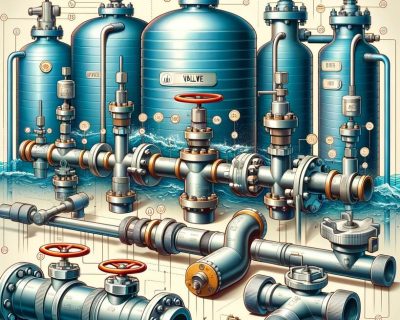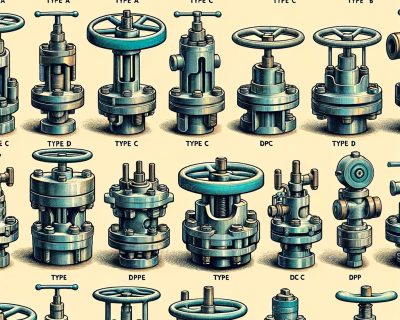
Unlocking the Potential of Acoples Camlock: A Comprehensive Guide
Table of Contents
ToggleIntroduction to Acoples Camlock
The world of industrial fittings is vast and varied, but few components are as versatile and crucial as Acoples Camlock. These fittings, known for their ease of use and reliability, are pivotal in various industrial and commercial applications. This article delves into the intricacies of Acoples Camlock, shedding light on their significance in modern industries.
History and Development of Camlock Fittings
Acoples Camlock, also known as cam and groove couplings, have a rich history that dates back to their inception for rapid, secure hose connection in the military. Their design has evolved to cater to various commercial and industrial needs, making them indispensable in many sectors. From their humble military beginnings, these fittings have undergone significant advancements, adapting to the changing demands of technology and industry.
Types of Camlock Fittings
- Type A: Male adapter with a female thread.
- Type B: Female coupler with a male thread.
- Type C: Hose shank coupler.
- Type D: Female coupler with a female thread.
- Type E: Male adapter with a hose shank.
- Type F: Male coupler with a male thread.
- Type DC: Dust cap for covering adapters.
- Type DP: Dust plug for covering couplers.
These types are crafted from stainless steel, aluminum, brass, and polypropylene, each selected for specific environmental and operational requirements.

Applications of Acoples Camlock
Acoples Camlock fittings find applications in numerous industries. They are a staple in the chemical, pharmaceutical, water treatment, and agriculture sectors, primarily for fluid transfer processes. Their design ensures a secure and leak-proof connection for handling hazardous or sensitive substances.
Advantages of Using Acoples Camlock
Acoples Camlock fittings offer several advantages:
- Ease of Use: Their simple design allows for quick and easy connection and disconnection, saving time and reducing labor costs.
- Durability: Made from high-quality materials, these fittings are designed to withstand harsh conditions and prolonged use.
- Safety: The secure locking mechanism minimizes the risk of leaks, crucial in handling hazardous materials.
Acoples Camlock fittings are an essential component in a multitude of industrial applications. Their historical development, variety, and practical advantages make them indispensable in the modern industrial landscape. These fittings ensure efficiency, safety, and reliability for fluid transfer in agriculture or chemical processing.
Installation and Maintenance Tips
Proper installation and maintenance are crucial for maximizing the performance and lifespan of Acoples Camlock fittings. Here’s a guide to ensure effective use:
- Installation:
- Ensure compatibility between the fittings and hoses regarding size, material, and pressure rating.
- Inspect the fittings for any damage or debris before installation.
- Align the cam arms and groove correctly to ensure a secure connection.
- Tighten the fittings just enough to seal, avoiding over-tightening that can damage the threads.
- Maintenance:
- Regularly inspect fittings for signs of wear, corrosion, or damage.
- Clean the fittings after each use, especially when used with corrosive or abrasive materials.
- Replace gaskets and seals to maintain a tight seal.
- Store fittings in a clean, dry environment to prevent corrosion.
Innovations and Future Trends in Camlock Technology
The field of Camlock technology is not static; it continues to evolve with advancements in materials and design. Innovations like RFID tagging for easy tracking, inventory management, and the development of high-pressure and high-temperature resistant fittings reflect the ongoing evolution in this space. Future trends point towards smarter fittings with integrated sensors for real-time monitoring of flow rates and potential leak detection, paving the way for more efficient and safer industrial processes.
Choosing the Right Acoples Camlock for Specific Needs
Selecting the right Acoples Camlock fitting requires careful consideration of various factors:
- Size and Type: Match the size and type of the fitting to the hose or pipe it will connect with.
- Material: Consider the material of the fitting based on the type of fluid being transferred and the environmental conditions.
- Pressure Ratings: Ensure the fitting can handle the operational pressure of the system.
- Quality: Opt for fittings from reputable manufacturers to ensure reliability and safety.
Case Studies and Real-World Examples
Real-world applications of Acoples Camlock fittings demonstrate their versatility and effectiveness. For instance, in the agricultural sector, Camlock fittings are used extensively for irrigation systems, allowing farmers to connect and disconnect hoses quickly for efficient water management. In the chemical industry, using stainless steel Camlocks ensures safe handling of hazardous chemicals, thanks to their leak-proof and corrosion-resistant properties. These practical examples underscore the adaptability and indispensability of Camlock fittings in various industrial scenarios.
In summary, Acoples Camlock fittings are a cornerstone in industrial connections. Their history, variety, applications, and continuous evolution highlight their critical role across numerous industries. From easy installation and robust performance to futuristic innovations, these fittings embody efficiency, safety, and reliability. Understanding their features and proper usage is essential for anyone involved in industrial processes where fluid transfer is a key component.





